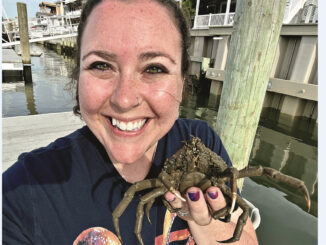
Sloths
By Hannah Schardt; photos by Suzi EszterhasWhy is this little guy above smiling? OK, maybe he’s not really smiling. That’s just how sloth faces look.
But the sweet-faced sloth in this photo does have reason to smile: Snuggled up with a stuffed animal, he has a full belly and a safe place to live. Not long ago, though, he was all alone in a forest in Costa Rica, a country in Central America. His mom had died, leaving him in serious danger. A baby sloth left alone could starve or be gobbled up by a predator. Luckily, someone found this baby and brought him to a sloth rescue group.
Like most babies, this one needs lots of care. So how do you raise a sloth? Read on to find out.
Baby Ella (top) is weighed every day to make sure she’s growing. Sanctuary founder Judy Avey-Arroyo feeds a special goat-milk formula to hungry Sebastian and Violet (above). The two-week-old twins have to be fed five times a day—even early in the morning and late at night! Welcome to the Slothpital! That’s what the people who work at Aviarios Sloth Sanctuary call their hospital and nursery building. It’s the place where orphaned or injured sloths are gently fed, groomed, and cuddled by workers. The sanctuary has rescued hundreds of sloths during the last 20 years. Some are adults injured by falls or other accidents. But many are orphaned babies like the ones in this story. In the wild, a young sloth will stick close to its mom for up to a year. It spends most of that time clinging to its mother’s fur. Some orphans are only a few weeks old when they arrive at the sanctuary. That means they need lots of one-on-one attention.
Sometimes, the babies arrive in bad shape. They may be injured or sick. Before the sanctuary was founded, people didn’t know much about how to treat sick or orphaned sloths. Now, after years of practice, Aviarios’s caretakers have perfected the art of raising—and releasing—healthy sloths.
“Ahhh. . .a little to the left, please.” The caretaker above right keeps Ella well groomed by combing her fur.
Table manners? Who needs those? The orphaned sloths (top photo) shovel vegetables into their mouths during mealtime at the sanctuary. Once they return to the wild, the sloths will eat mostly leaves. The sloths above are getting a taste of their future leafy meals. Sloths in the wild eat, sleep, and even give birth while hanging upside down from tree branches. In the sanctuary, sloths get plenty of upside-down-time, hanging from the bars in their cages. Wild sloths eat almost nothing but leaves and tree buds. Leaves aren’t very nutritious. And they are hard to digest. Sloths have large stomachs that work very slowly. In fact, more than half a sloth’s body weight is the food still inside its stomach! That leafy diet doesn’t provide much energy. So sloths use as little energy as possible. They hardly move at all. And when they do, they move slooooowly. You might think this would make them easy prey for predators such as jaguars and eagles. But actually, sloths are usually so still that predators don’t even notice them!
Like its stomach, the rest of a sloth is extraordinary—and well suited to its slow-moving, tree-top lifestyle. The sloths in these photos are Hoffmann’s two-toed sloths. If you look closely, you can see that they have only two toes—or fingers—on each front foot. (Some other sloth species have three front toes.) But those toes are very important! Their long, curved claws keep sloths firmly attached to tree branches. And those claws are their only defense against predators.
Sloths’ furry coats are also out of the ordinary. Look at the fur on a cat. Like most mammals’ fur, it grows downward from the cat’s back toward its belly. A sloth’s hair grows in the opposite direction, from its belly toward its back. That’s because normal fur would fluff up, not lie flat, on an upside-down sloth. A sloth’s smooth fur sheds water while it hangs upside down in the rainforest.
Sloth fur also helps hide sloths from predators in the wild. That damp fur is a great place for moisture-loving algae (AL-jee) to grow. The algae turn the fur greenish. This makes a sloth blend in with the leaves around it. The algae also make great food for harmless moths. A sloth’s coat may be home to dozens of “sloth moths.”
Of course, the orphaned sloths that live in the dry, cozy Slothpital don’t have a chance to attract the algae—or the moths. That will have to wait until they are old enough to be released back into the wild. Outside the building is a 230-acre forest that belongs to the sanctuary. That’s where caretakers will take a recuperating sloth for regular tree-climbing practice. Once the sloth is completely healthy and strong, caretakers bid it goodbye and release it into the forest. On its own at last, the sloth climbs slowly up into the treetops—and back to a life in the slow lane.
“Release me!” After several months in the Slothpital, Bridget is ready to return to the wild (above.) Back in the trees where she belongs, the healthy sloth rests happily in her rainforest home.
“Sloths” originally appeared in the February 2012 issue of Ranger Rick magazine.
(Click on each image above for a closer view of the story.)




















